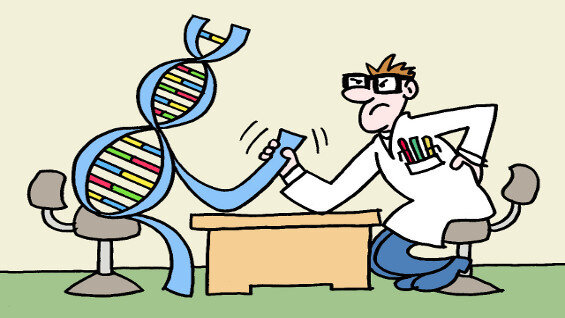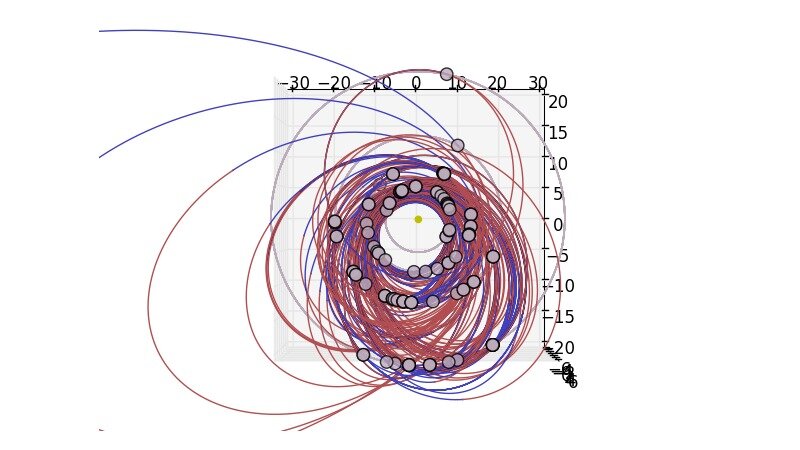ESA team’s computer-evolved trek round Jupiter wins science prize
ESA’s Advanced Concepts Team has received a prestigious ‘Humie’ award for their use of ‘evolutionary computation’ to plan a spacecraft’s route around Jupiter’s main moons, achieving an efficiency beyond the best human efforts.
The researchers received their Humie Gold Medal and prize for best paper at the annual Genetic and Evolutionary Computation Conference, which took place in Amsterdam on 6–11 July.
Founded in 2004, the Humies Awards recognise human-competitive results that were produced by any form of genetic and evolutionary computation. By applying Darwinian principles of natural selection and survival of the fittest to technical challenges, possible solutions are ‘bred’ across multiple generations to evolve towards increasingly better solutions.
“The Advanced Concepts Team (ACT) exists to monitor, perform and foster research on advanced space systems, looking 20–30 years into the future,” explained Dario Izzo, its scientific coordinator.
“We believe genetic and evolutionary computation will play an increasingly important role in space engineering and design in the coming years, so we are preparing the Agency for such a future.

“We followed this approach to design an interplanetary trajectory around the Galilean moons of Jupiter, a topic already of interest to global space agencies through missions like ESA’s forthcoming Jupiter Icy Moons Explorer, Juice.”
Discovered by Galileo Galilei with his ‘optik tube’ telescope in 1610, these four are the largest of Jupiter’s dozens of moons. From volcanic Io to icy Europa, cratered Callisto to planet-sized Ganymede, each moon has its own distinct character, circling in complex, interweaving orbits around their gas-giant parent.
The top human trajectory engineers and mathematicians had already given their best shot at developing the ideal plan to survey the Galilean moons, using the smallest quantities of spacecraft propellant to image as much of their terrain as swiftly as possible – an important point because of the hostile radiation belts that surround Jupiter.
This was the challenge set during last year’s Global Trajectory Optimisation Competition, hosted by NASA’s Jet Propulsion Laboratory – a regular event founded by ACT, and otherwise known as ‘the America’s Cup of rocket science’.

“That contest was won by a joint team from Turin and Rome Universities with an amazing trajectory mapping almost all of the moons. But afterwards we decided to see if evolutionary computation could do even better,” explained Dario.
“This involves setting up – encoding – the trajectory into the electronic equivalent of a chromosome, with the various values representing genes.
“Potential solutions are then mutated and interbred over multiple generations of computation time, with evolutionary pressure leading towards their improvement.
“The contest treated all the Galilean moons as footballs with 32 faces each and the challenge was to image as many faces as possible. The best human result left 13 faces unseen. Our result was a significant improvement, managing to reach five more, using less propellant and having an equivalent exposure to radiation around Jupiter.”
Evolutionary computation has already been applied to other space activities, such as antenna and microstructure radiator design as well as robot behaviour.
“For evolutionary computation to work, a problem needs to be broken down as a system where evolution can take place,” Dario concluded. “Once that is done, the evolutionary process can proceed without active human involvement.”
The winning team, led by Dario Izzo, included ACT members Marcus Märtens and Aurelie Heritier and former ACT researchers now working in different institutions: Hong Kong University of Science and Technology (Chit Hong Yam), Vrije Universiteit Amsterdam (Luís F. Simões) and TU Delft (Guido de Croon).





